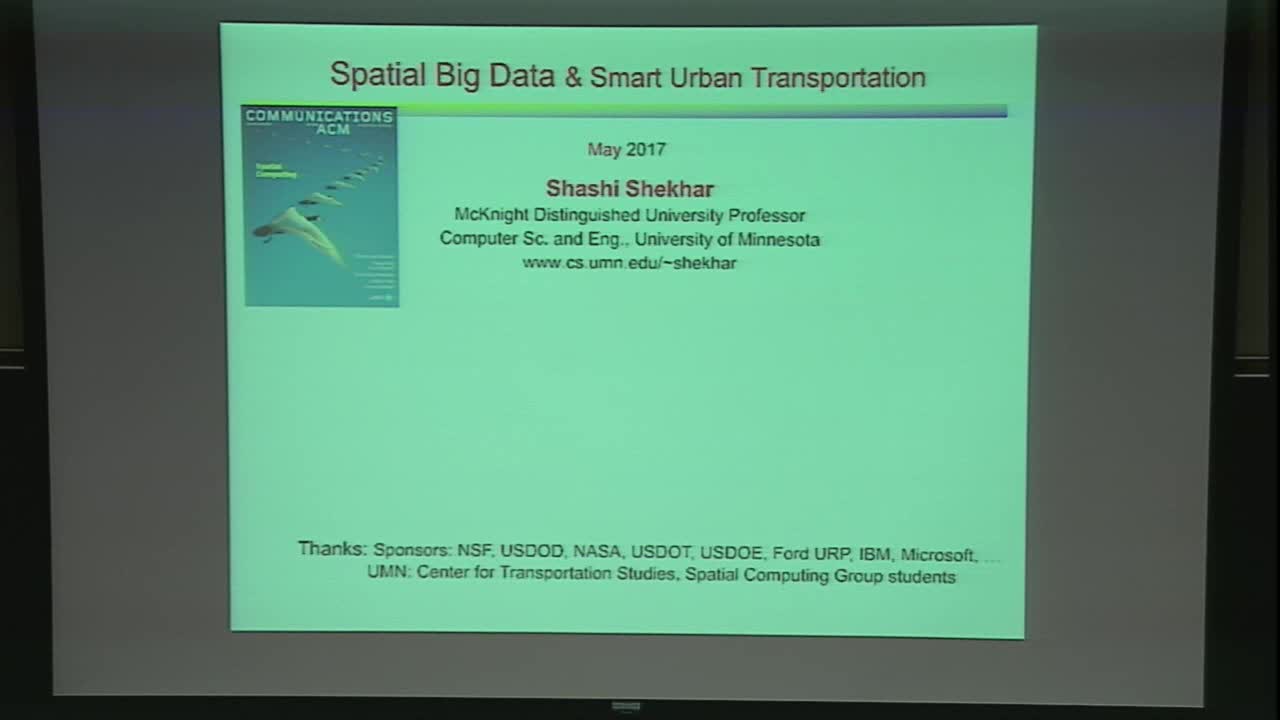Spatial Big Data: A keystone for Smart Urban Transportation
Presenter
May 15, 2017
Abstract
Spatial Big Data (SBD) refer to spatial datasets of size, variety, and update rate that exceed the capacity of commonly used computing technologies to manage and process the data with reasonable effort. Examples of emerging SBD include temporally detailed (TD) roadmaps that provide speeds every minute for every road-segment, GPS track data from cell-phones, and engine measurements of fuel consumption and greenhouse gas (GHG) emissions, etc. These datasets have already revolutionized the world of urban transportation via innovations such as Google Maps and ride-hailing services such as Uber. In the future, SBD has major transformative potential for smart urban transportation. For instance, a 2011 McKinsey Global Institute report estimates savings of “about $600 billion annually by 2020” in terms of fuel and time saved by helping vehicles avoid congestion and reduce idling. SBD such as TD roadmaps allow next generation routing services where users can identify routes which reduce fuel consumption and GHG emissions, as opposed to traditional routing services reducing the distance or time traveled. Engine measurement SBD can be used to discover engine patterns that are highly correlated with low fuel efficiency or high GHG emissions. These patterns will help engine scientists optimize engine design based on actual real-world driving conditions rather than the limited conditions tested in laboratories, which has been shown to be inadequate as illustrated by the recent Volkswagen emissions scandal and fines to other manufacturers. Moreover, they can be used by future smart engines to modify the rule-sets calibrating the engine performance at real-time using two-way vehicle-to-cloud connectivity according to current real-world conditions (e.g. driving in a busy downtown versus suburban regions, driving with frequent stops, etc) to improve fuel efficiency. Real-time calibration can also allow switching the engine operation mode to reduce emissions in sensitive areas (e.g. schools, hospitals). Furthermore, SBD can also allow the on-demand and sharing economy to grow beyond traditional ride-sharing and taxi-hailing services. For instance, users' real-time locations and historical GPS trajectories, augmented with calendars, shopping lists, and gift registries, can be leveraged for commerce opportunities by matching mobile consumers and service providers on the road. Mathematical optimization methods are essential for realizing many of the aforementioned opportunities (e.g. identifying optimal points on the road for turning on the engine to charge the battery, optimizing the number of matches among consumers and producers in an on-demand service broker, etc).
cknowledgements: This work is suppoted by the National Science Foundation under Grant No. IIS-1320580, FORD University Research Program (URP), and the ARPA-E NEXTCAR program. Collaborators include Prof. William Northrop (Mechanical Engineering), Prof. Viswanath Gunturi (IIIT Delhi, India), and Reem Ali.
